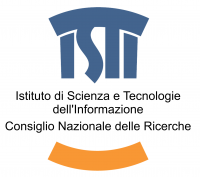In the past decade, significant effort has been directed toward the development of robust methodologies and supporting technology for enabling and populating specialized repositories of digitized cultural heritage (CH) artefacts, including best practice guides and large-scale digitization projects. Furthermore, a systematic effort has been focused on the process of indexing and annotation of digital collections, enabling meaningful interpretations in a multitude of application scenaria such as on-line digital repositories and virtual reconstructions.
Up to now, digitized data have been exploited in their existing form in numerous CH application scenaria. The rapidly increasing digitized CH content however, can be used to provide feedback for the generation of new information itself. Based on the experience and on-going efforts within the PRESIOUS EU-funded project, this workshop attempts to present existing and on-going research in technologies and practical applications that augment the geometric data of digital CH objects by predictive generative processes guided by geometry processing, analysis and shape matching methods for 3D objects. The primary directions of the discussion will be: technologies for automatic scan completion, erosion simulation and prediction for stone monuments, and automatic object reassembly and repair of damaged and fractured CH objects. We will also touch upon approaches to evaluate the developed new techniques from the algorithmic and archaeology-application domain.
The Workshop will consist of a number of presentations accompanied by software demonstrations, each of which will last 1-1.5 hrs. A discussion session will follow. More specifically:
3D Scan auto-completion attempts to predict the shape of CH objects while these are being digitized, based on incrementally available partial scans and knowledge about other scanned objects. This opens new possibilities in the digitization paradigm, where meaningful suggestions for missing data can be made, effectively minimizing the overall time and cost of the scanning procedure or avoiding scanning hard to reach or inaccessible surfaces of the original CH artefact. The talks relate the problem to partial object retrieval, non-rigid registration and self-similarity detection algorithms and explains how these can be exploited.
Simulation and validation of the stone erosion process. Based on present-time surface shape, material measurements and environmental data, this talk focuses on the creation of a computer model for the simulation of the degradation process in the distant future, thus aiding the experts in making crucial preservation decisions. The talk explains how physicochemical data and the geometry of scanned objects are used to estimate and visualize the shape and texture alterations of a deteriorating stone object. Methods and practical solutions for capturing the data with precision and validating the computational model are also discussed.
Automatic object reassembly and repair of damaged and fractured CH objects. This talk explores the problem of restoring fragmented and damaged cultural heritage objects, by automatically identifying and combining missing parts and inferring missing geometry via self-similarity, symmetry and existing object templates. The discussion involves innovative approaches for dealing with heavily damaged fragments and non-contacting parts, practical algorithms for robust registration and repair and presents the entire restoration pipeline, from the acquired digital collection to the extraction of the missing parts for milling to aid the physical repair process of the actual objects.
Workshop speakers (tentative):
3D scan auto-completion (est. time: 1h)
- D. Rieke-Zapp (dirk.rieke-zapp@breuckmann.com) – Breuckmann GmbH, Germany
- I. Pratikakis (ipratika@ee.duth.gr) – Athena Research Center, Greece
- M. Savelonas (msavelonas@gmail.com) – Athena Research Center, Greece
- P. Mavridis (pmavridis@aueb.gr) – Athens University of Economics and Business, Greece
Simulation and validation of the stone erosion process (est. time:1h)
- T. Theoharis (theotheo@idi.ntnu.no) – Norwegian University of Science and Technology (NTNU), Norway
- C. Schelewald (schellew@idi.ntnu.no) – Norwegian University of Science and Technology (NTNU), Norway
- P. Perakis (giotiperi@gmail.com) – Norwegian University of Science and Technology (NTNU), Norway
- D. Rieke-Zapp (dirk.rieke-zapp@breuckmann.com) – Breuckmann GmbH, Germany
Automatic object reassembly and repair of damaged and fractured CH objects (est. time: 1h30m)
- G. Papaioannou (gepap@aueb.gr) – Athens University of Economics and Business, Greece
- T. Schreck (tobias.schreck@uni-konstanz.de) – University of Konstanz, Germany
- P. Mavridis (pmavridis@aueb.gr) – Athens University of Economics and Business, Greece
- A. Andreadis (anthousis@aueb.gr) – Athens University of Economics and Business, Greece
- R. Gregor (gregor@dbvis.inf.uni-konstanz.de) – University of Konstanz, Germany
- I. Sipiran (sipiran@dbvis.inf.uni-konstanz.de) – University of Konstanz, Germany
Discussion with inputs from the audience (est. time:1h)
Related links:
- The PRESIOUS project official web site: http://presious.eu, containing papers on latest research results and a test collection of 3D artifact data from two archaeological sites
- The digital reassembly and repair research page of the Computer Graphics Group of the Athens University of Economics and Business: http://graphics.cs.aueb.gr/graphics/research_reconstruction.html
- Visual Computing Laboratory, NTNU: http://www.idi.ntnu.no/grupper/vis/
- Breuckmann www.breuckmann.com/
- Athena Research Center https://www.athena-innovation.gr/
- University of Konstanz, Visual Analytics Group, http://www.informatik.uni-konstanz.de/schreck/


